Coney Island – What A Community Needs Year Round
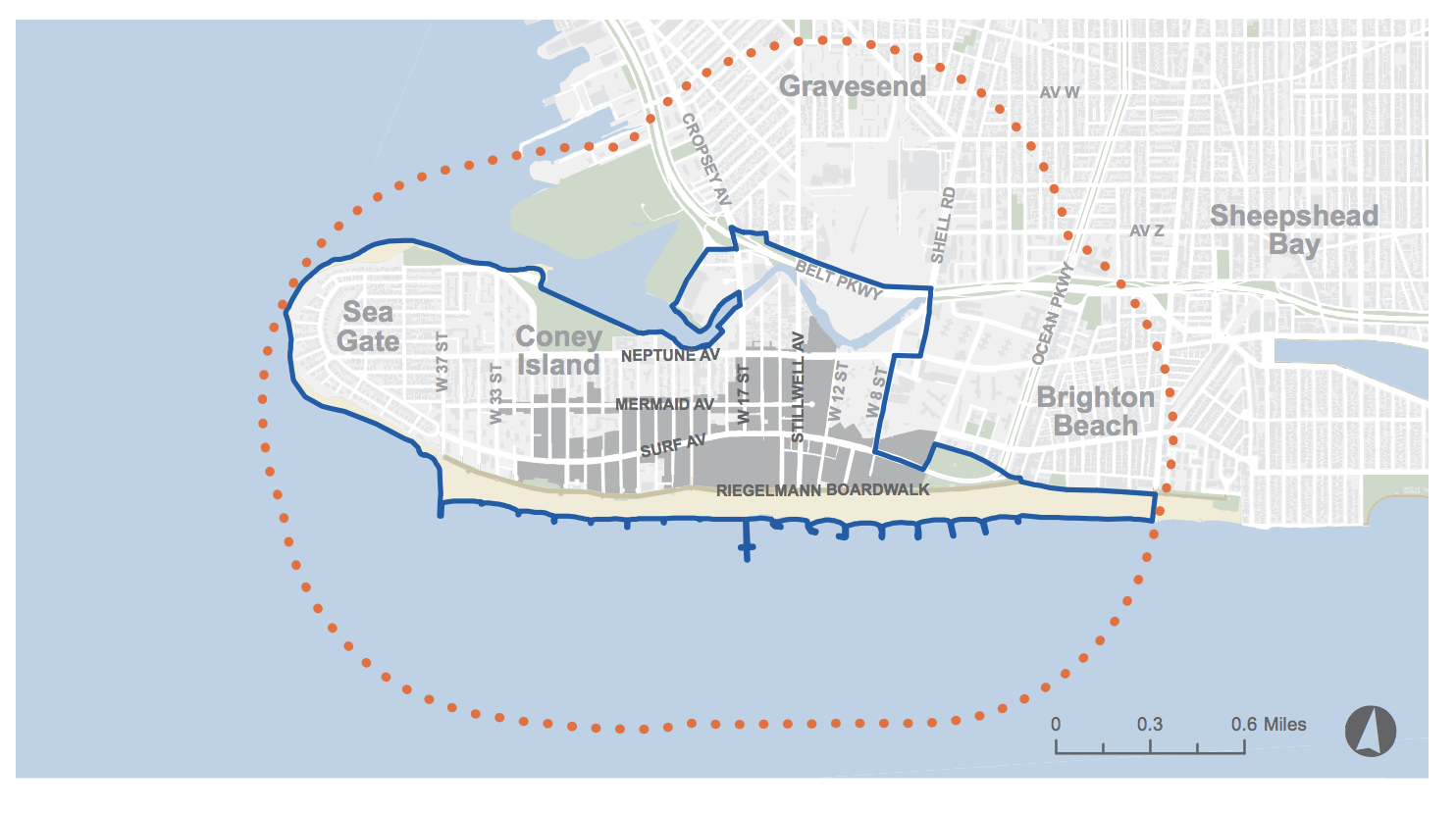
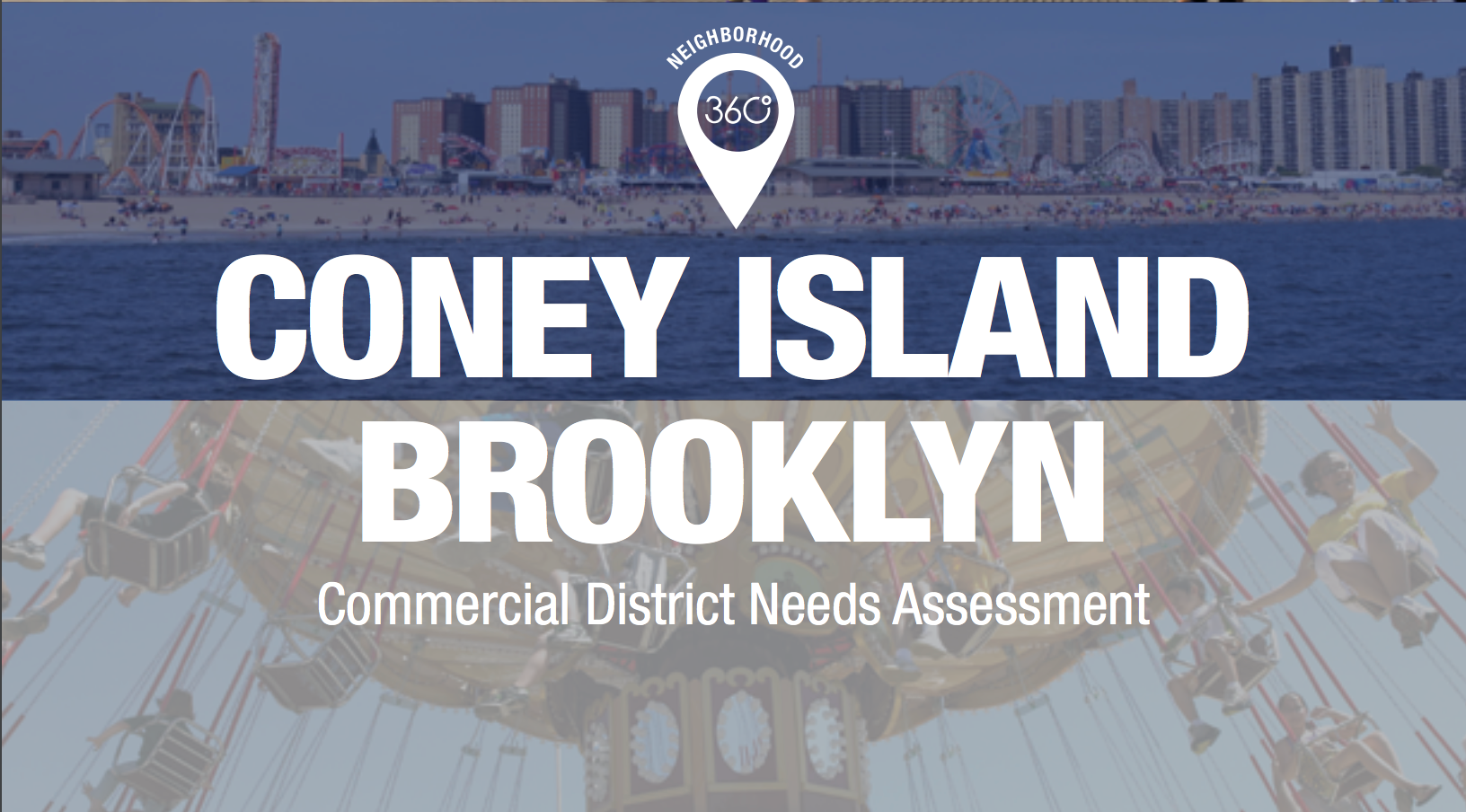
CONEY ISLAND – NYC Department of Small Business Services (SBS) has released the recently completed Commercial District Needs Assessment for Coney Island – one way the city is helping facilitate conversations about what is happening along the commercial corridors in our communities. Local retailers are struggling citywide, as we have been reporting, from ever-rising rents, that affect their expenses as well as the purchasing power of neighborhood residents, to ever-growing competition from online retail.
This report was produced by SBS in partnership with the Alliance for Coney Island, which surveyed 118 merchants and 329 residents and shoppers across the area outlined in blue in the image below, and conducted meetings and interviews with local organizations and community members throughout last year.

Coney Island is a special place. It has many beautiful public spaces, rich history and is a massive destination in the summer for many Brooklynites and visitors – the beach attracts about 5 million visitors each year, according to the City. It is also home to about 32,000 residents year round.
Those residents are elderly (20% are over 65 as opposed to 12% Brooklyn-wide) and poor – the median income for the area is just over $24,000, meaning half the residents make less than that and a full 36% of households live below the poverty line. Brooklyn median income is almost twice that at $47,000. The unemployment rate is also twice the borough average at 20%.
Many reside in large NYCHA apartment complexes that line the blocks between Mermaid and Surf avenues, others in smaller, privately owned buildings, and then there is the gated community at the most western end of the island – Sea Gate. All of it was heavily affected by Hurricane Sandy.
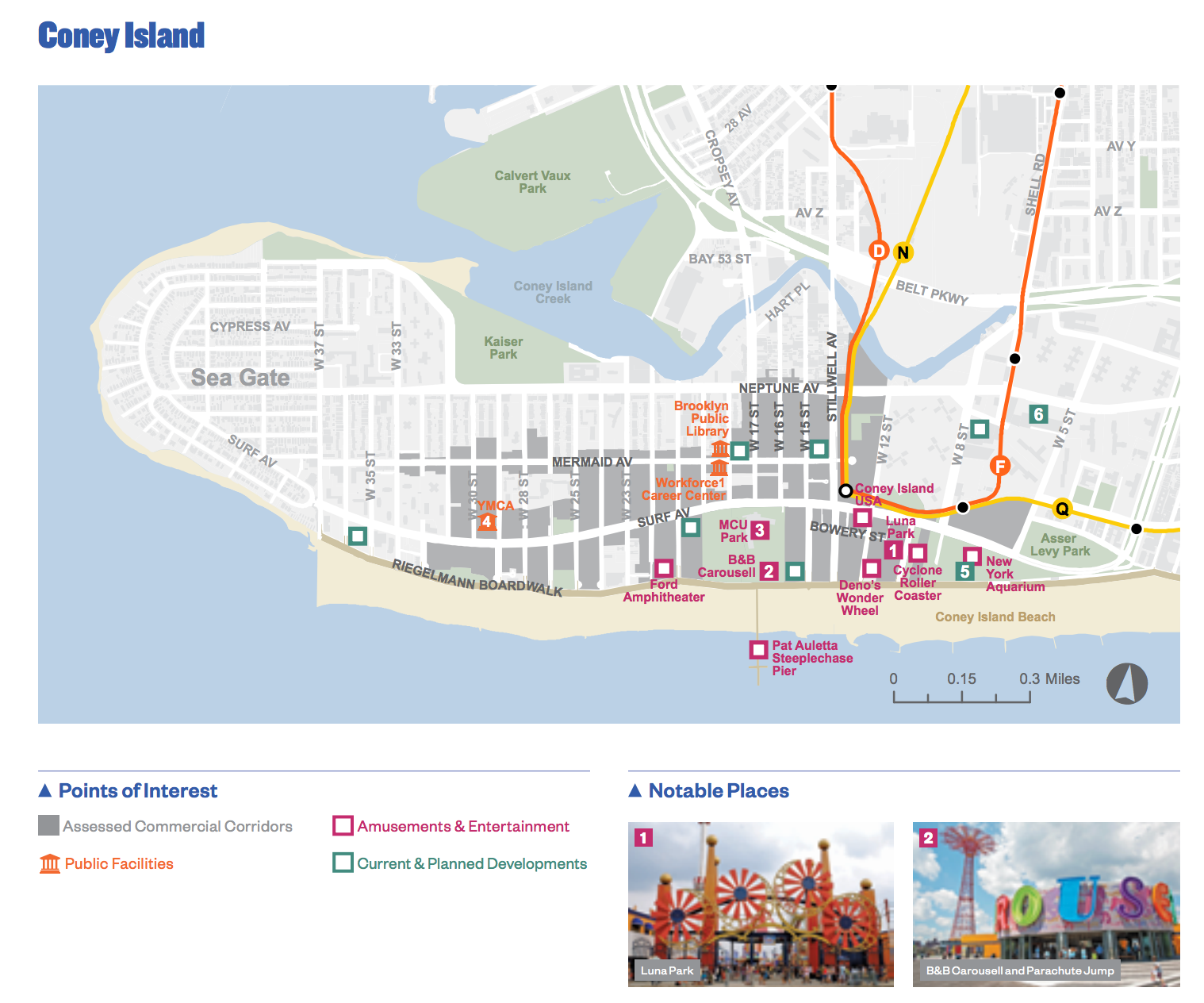
While the entertainment district has recovered from the storm, and a number of new developments are slated around the subway station, retail corridors serving the community at large have not been so lucky. That may change a little with the help of Ocean Dreams, a massive residential complex in the works for 3514 Surf Avenue by the boardwalk that plans to bring a trolly service to Surf Avenue to shorten the otherwise 30-minute walk to the subway but also includes retail on the ground floor.
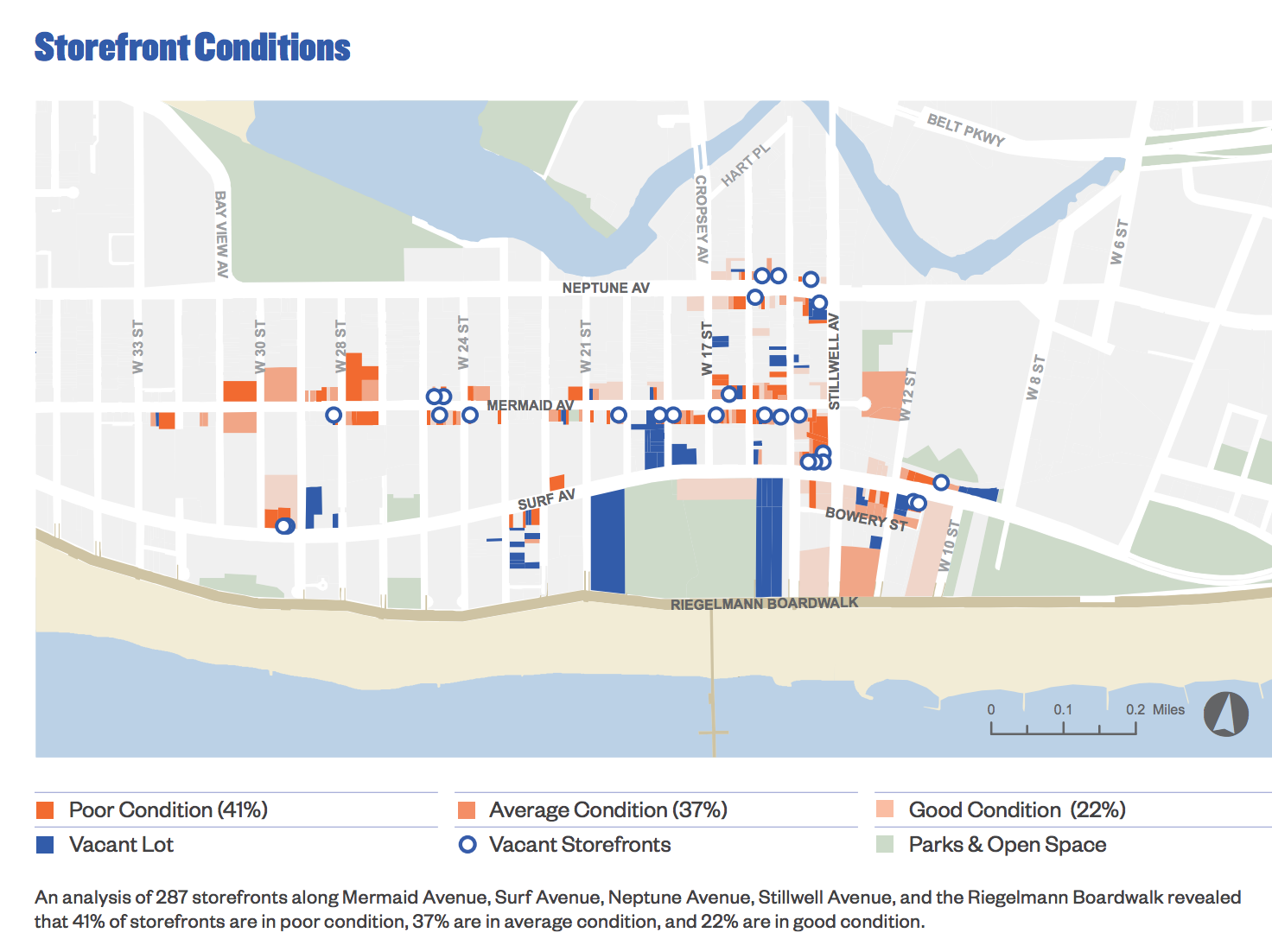
The large apartment buildings that dominate the skyline make for few and interrupted retail opportunities, resulting in many residents shopping outside the area. Of the 287 storefronts that were accounted for in the survey area, 33 or 11.5% were vacant, and the report also accounts for 30 empty lots. Mermaid Avenue is the main retail corridor outside the entertainment district, and even that is pocketed by empty lots, and long, windswept blocks and over 40% of storefronts are in poor physical shape.
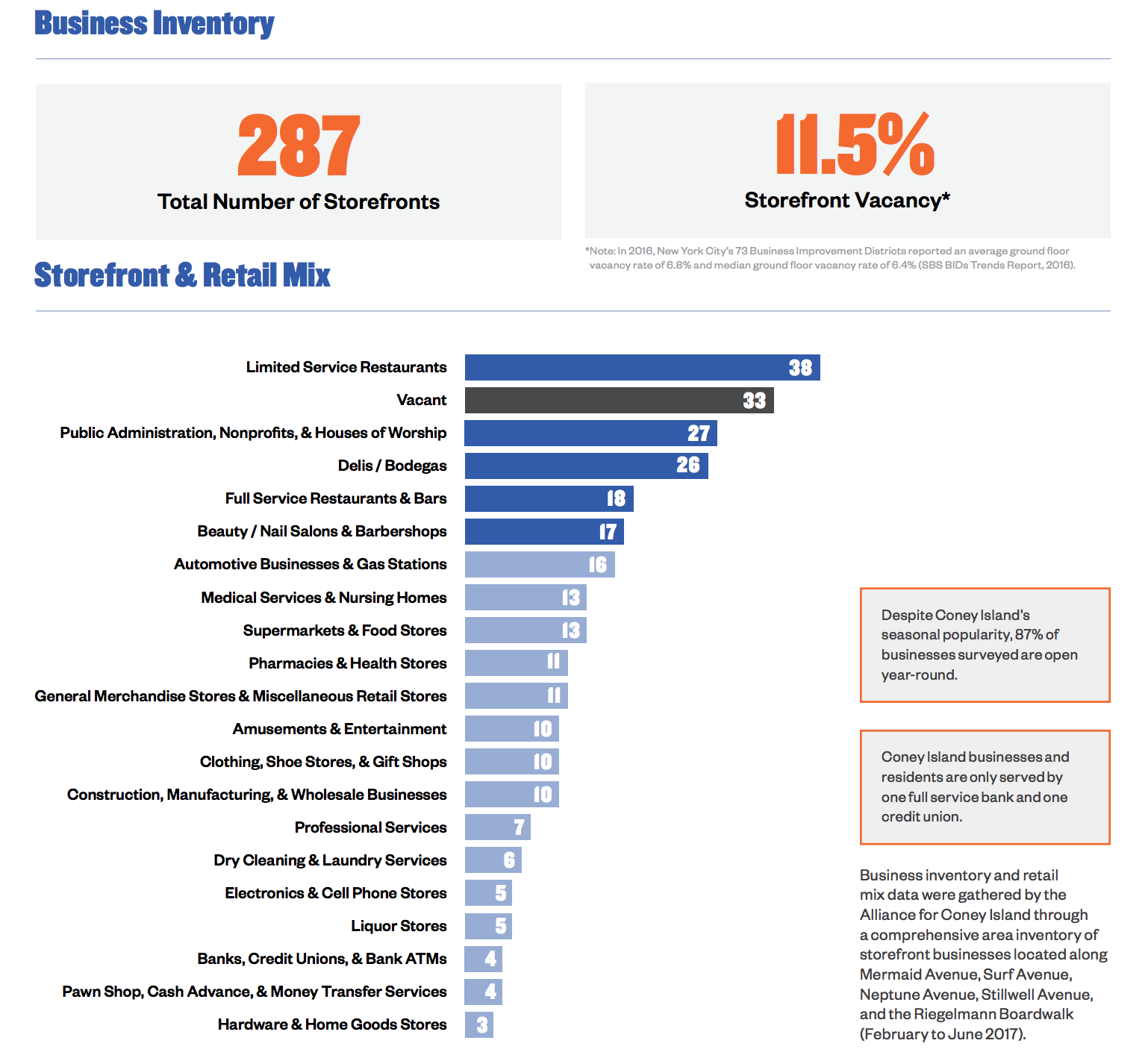
The top uses of storefronts are what you would expect in a residential community – bodegas, nail salon and barber shops, churches and restaurants. They are small retail operations – 46% have only one or two employees and 31% have 3-5, and 36% have set up shop in the last 5 years. A handful have been in the business for over 40 – Nathan’s Famous at 101 years may be the most famous, but Wilensky Hardware and Friscia Pharmacy on Mermaid are close seconds at 97 years in business.
Among other challenges, the report notes that:
- Perceptions of safety are poor, especially at night
- Coney Island remains a primarily seasonal attraction, so the number of visitors to the district fluctuates, making it difficult for businesses to reach their sales goals during the winter months
- There is a strong need for more shopping and healthy food options, which causes residents to shop outside of the neighborhood
- Public spaces, though abundant and easily accessible, are underutilized by both residents and visitors
- Vacant lots, vacant storefronts, and non-commercial uses visibly disrupt the continuity of retail corridors
- High proportion of storefronts are in need of physical improvements
- Many seasonal visitors do not patronize businesses outside of the amusement district
Opportunities are there to :
- Fill vacant storefronts with new businesses that will meet the needs of local residents and tap into their spending power
- Activate underutilized public spaces and create opportunities for community programming
- Clean, beautify, and maintain streets and sidewalks
- Implement programming, wayfinding, and marketing to encourage visitors to explore businesses on Mermaid and Neptune avenues
- Improve lighting along commercial corridors and side streets to address safety concerns and foster connections across the district
- Leverage the diversity of the community to promote entrepreneurship and expand on Coney Island’s reputation as a unique destination
- Increase communication among merchants and expand services to support business growth
- Build the capacity of community-based economic development organizations and leverage the strong interest for merchant collaboration
SBS was eager to tell us that it is not and should be not viewed as “SBS’ vision for Coney Island,” but as a resource to facilitate conversations in the neighborhood about how to revitalize the area. And there are ongoing conversations – maybe there should be a Business Improvement District? Why do we not have a ferry stop at Coney?
Back in 2008, there was a lot of talk about a vision for Coney Island, what this community could be. It may be worth revisiting those ideas for fresh inspiration.




